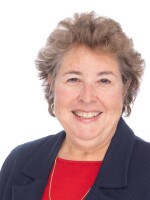Outside the Contemplative Sciences Center, there’s a man-made pond created to capture storm water. It’s home to fish, frogs, turtles and other aquatic life. It’s also the control center for a work of art inside the building.
“There’s a sensor that sits at the bottom of the Dell Pond that takes environmental data into this room that is composed of 3,300 unique, laser-etched glass blocks with water lilies and plant material etched within each.”
That’s Hagan Tampellini, director of a gallery called Les Yeux Du Monde. When a fish passes by, a cloud covers the sun, a gust of wind ripples across the surface walls are constantly lit in different ways.
“So the fish and the turtles move. Then it informs the light, color and sound, and when the humans move within the space it also informs the light, color and sound, so it’s never the same twice.”
The artist, Wolfgang Buttress, is best known for another nature-based art experience.
“His most noteworthy work is The Hive, which is permanently installed in London’s Kew Gardens. It’s an enormous lattice structure that takes environmental data in real time a real beehive which informs an ever-changing score of light and sound."
On the fourth floor of the Center there’s another immersive piece of sound art – again, in a darkened room with pillows scattered across the floor.
“Spring peeper, recorded May 6th, 1963 by a pond in Ithaca, New York,” says a recorded voice.
Music Professor Matthew Burtner assigned seven graduate students to create art from sound and light. Take this work for example.
“It puts the lights into different parts of the room as each frog is introduced, and the sound comes from that place, but then – of course – it morphs into stranger and stranger realms of frogs and toads. There are some that take place into the far future, in a black hole," he explains.
“Tree frogs recorded near the region formerly known as Delaware as the Milky Way Galaxy was drawn into a black hole.”
Suddenly, the gallery lights come on – startling visitors as they experience this fictional entry into a black hole.
Burtner says these works, orchestrated by a computer, are complicated.
“Some of the pieces have up to 40 channels of simultaneous audio moving around the room independently.”
But the goal is simple – getting visitors to listen and think about sound.
“Perhaps makes them more attentive to the immersive sound that we encounter in the world every day.”
So far, these works have proven popular. Connie Kresge and Ellen Daniels are with the Contemplative Sciences Center.
“People have just loved it. There was one time a few weeks ago it was standing room only and a line out. Students especially take it as a respite from their studying," Kresge recalls.
"And I think what’s important too is the artist wanted people to feel present – a sense of being in the moment, and a connection with nature, which he feels is so fragile," Daniels explains.
Visitors like Vicki Newman and Jill Lord had varied reactions to the pond-related work.
“The delicacy of the drawing and the etching within the tiles was pretty remarkable knowing how it was formed with his larger studio of technologists and architects and artists. It’s pretty impressive," Newman concludes.
“It was wonderful. It was like being in a whole other dimension of peace and serenity and connected to whence we came and maybe to whence we return," Lord says.
And Professor Burtner confirmed students are all in on the other exhibit:
“Students are often in there, laying on the meditation pillows, just taking a pause from the busy life of the university.”
He’s now reaching out to other universities, museums and galleries that have the equipment needed to experience the show and hopes to share it with people around the world.
Where:
The Contemplative Sciences Center is at 403 Emmet Street South in Charlottesville and can be reached at 434-982-6057.
When:
It’s closed November 26-28 but will re-open December 1 from 7 am to 7 pm.
Sonic immersion in the Conservatory at UVA’s Contemplative Sciences Center is open from 2-6 p.m. but closed on November 26, 27 and 28.
How:
Parking is available across the street using the Parkmobile app.
This report, provided by Virginia Public Radio, was made possible with support from the Virginia Education Association.


